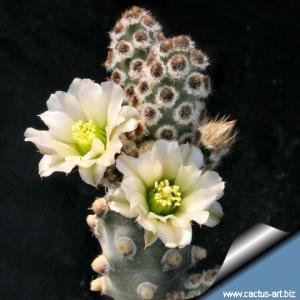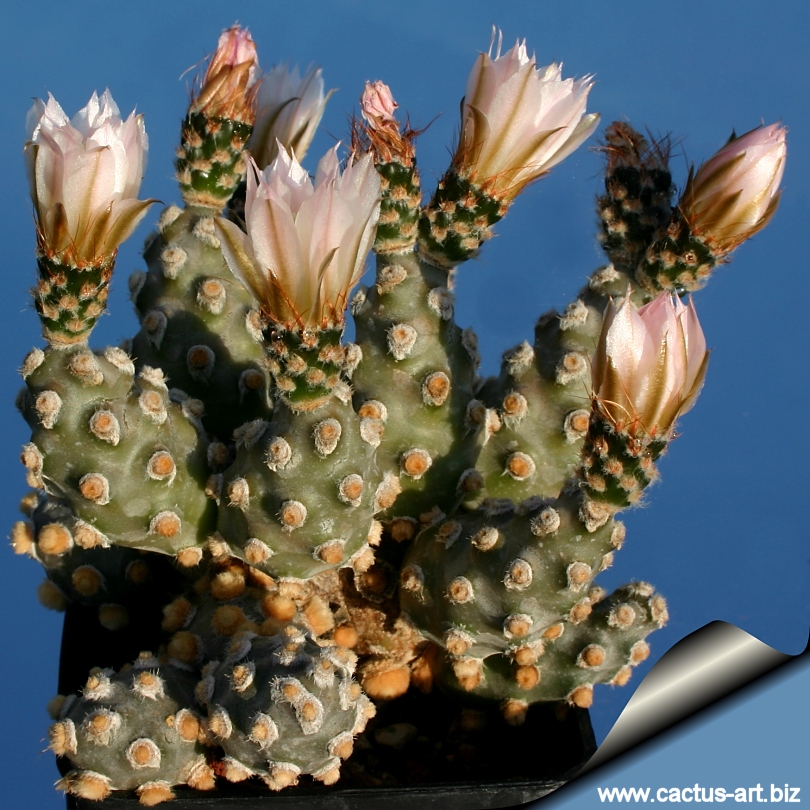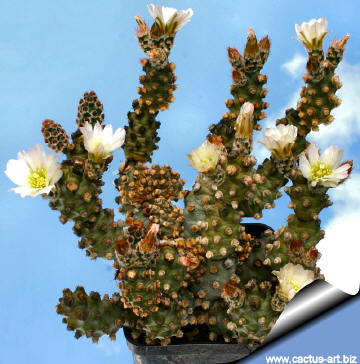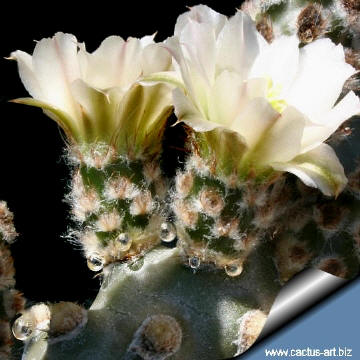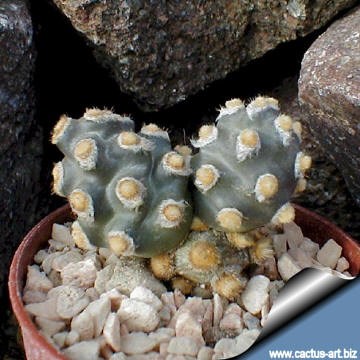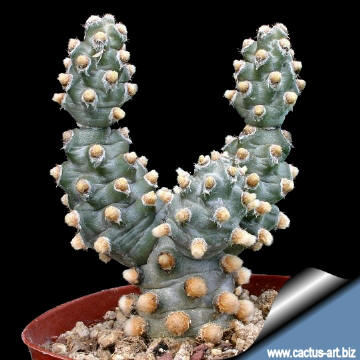-
x
Descrizione
|
Bella succulenta senza spine dal corpo segmentato, che forma piccoli cespugli composti da rami a forma di catena. Le areole con glochidi bruni e feltro bianco sono particolarmente ornamentali. Fiori bianchi in giugno-luglio. Family: Cactaceae (Cactus Family) Type: Exsiccata: “Opuntia schumannii-Tephrocactus molinensis” (LPS 14335). Lectotype designated by Kiesling (1984a: 230, as type). Corp.Basionym: Opuntia molinensis Spegazini. Distribution: Argentina (Salta, Los Molinos) Habitat: Grows a open area among wide spread Trichocereus pasacana. Etymology: The genus name "Tephrocactus" derives from the Greek adjective “tephros (τεφρος)” meaning “ash coloured” plus the connective vowel “o” used in botanical Latin for Greek words , and the word “cactus” (an old genus name)
|
|
|
Morphology (Identifying Characteristics): Small clumping segmented succulent, In cultivation grows as a small erect segment chains. In habitat the plants stay smaller because the uppermost segments are detachable and drop easily. |
|
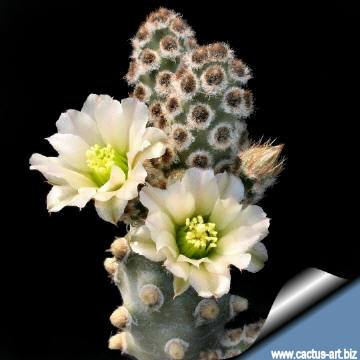 Blooms |
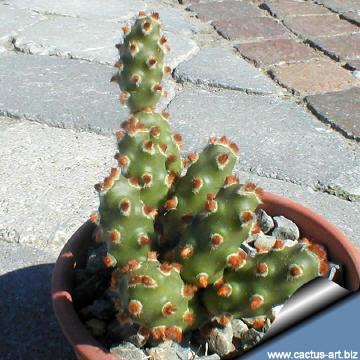 The "Red glochid form" |
|
Cultivation: It is easy to grow but usually couldn’t get very tall as segment kept falling apart. It is fairly cold resistant and hardy to -9°C depending on the clone, Need full sun, (with insufficient illumination stems get thinner as a result of the lack of sun) The main growing period is spring. It might produce some new segments in the autumn too. Needs good drainage. Propagation is through segment cuttings, or occasionally seeds The little glochids at the base of these larger spines are quite a nuisance, and it is best to use gloves to handle this plant. |
|
|
The abundant guttation from the areoles at the base of hypanthium at anthesis, a phenomenon common among most Tephrocacti |
|
|
The articles are spineless glaucous. |
|

